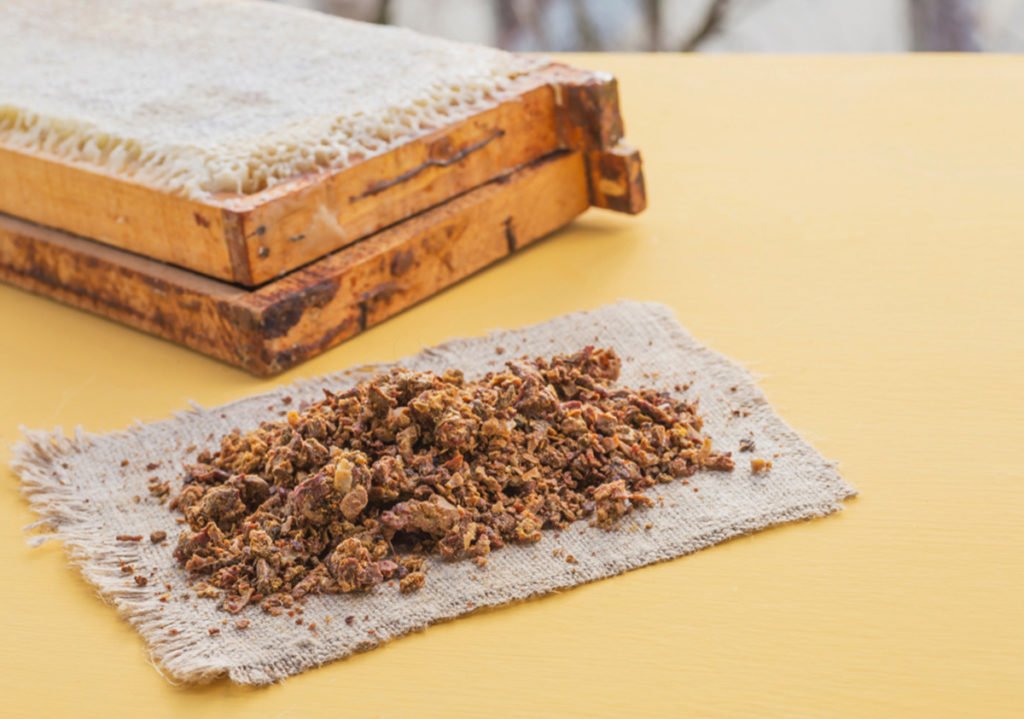Propolis; They are resinous substances collected by bees from plant buds and plant leaves. Propolis is used by bees to provide disinfection inside the hive. In other words, the bees use the propolis they collect in order to destroy the microbes in the hive, to protect them from fungi and infections, and to prevent insects and other living things from infiltrating the hive. In order to protect the safety and health of the hive, all bees enter through a special section covered with propolis and ensure the hygiene of the hive.
Propolis has many effects on human health. In addition to its antioxidant, antiviral and antimicrobial properties, it has an effective feature such as healing wounds quickly, protecting against microbes and bacteria, renewing the skin, and preventing the formation of cancer cells.
So why is it such an effective substance, what kind of components does it contain, which components make it effective on people?
Propolis and Its Components
Propolis is 40-70% resin, depending on its source; 3-5% essential oil; 25-30% wax; It contains substances such as 5% mineral substances, proteins and vitamins. Factors such as the type of plants, bee breed, and season of collection affect the rate and variety of components. More than 300 components have been identified in raw propolis. More than 180 of them are made of polyphenols, more than 20 of them are mineral substances and different amounts of vitamins, proteins, amino acids and carbohydrates. K, Na, Fe, I and Zn etc. In propolis, which contains 22 nutrients that should be taken into the body such as beneficial minerals; polyphenols, amino acids, steroids and coumarins.
Flavonoids such as pinosembrin, galangin, caffeic acid, caffeic acid phenyl ester, quercetin, luteolin, camferol, aromatic acids and their esters, which are effective in the biological activity of propolis and its extracts, have different biological activities.
Covid-19 and Propolis
The rich flavonoid and phenolic contents of propolis give propolis many biological activities. Caffeic acid and its derivatives, acids such as ferulic acid, caffeic acid phenyl ester (CAPE), protocatechic acid and gallic acid are substances with strong antioxidant effects in the emulsion and lipid system.
Components that are effective against bacteria, viruses and microbes; Caffeic acid phenethyl ester, Caffeic acid, Quercetin, Galangin, Apigenin, Naringenin, Rutin, Emodin, Chrysin, Epigallocatechin gallate. Quercetin in the flavonoid compounds is the component with the most effective radical scavenging feature and quercetin also has the highest anti-inflammatory effect.
is a phenolic compound.
Based on this information, studies on COVID-19 are continuing and it is thought that propolis may be effective on these viruses.
Usage Dosage of Propolis
In vivo and clinical studies have determined that propolis can be used safely in humans and rats without causing allergic reactions or that its toxic effects will not be seen unless it is applied in high amounts.
Due to the fact that raw propolis has not been standardized, there are differences in its toxicity. In addition, there are data obtained in studies conducted by different researchers. While it has been reported that the use of propolis more than 15 grams per day will cause skin irritation and allergies, it has been stated that care should be taken in its use in people with asthma and eczema. It has also been reported that in a patient with cholangiocarcinoma who needed dialysis due to renal failure, the renal functions of propolis deteriorated with the use of propolis and improved after discontinuation of its use, and this may be caused by the CAPE in the structure of propolis.
Currently, the most known use is 1 drop of propolis per 10 kilos. In other words, a person weighing 70 kilos should use 7 drops of propolis.



